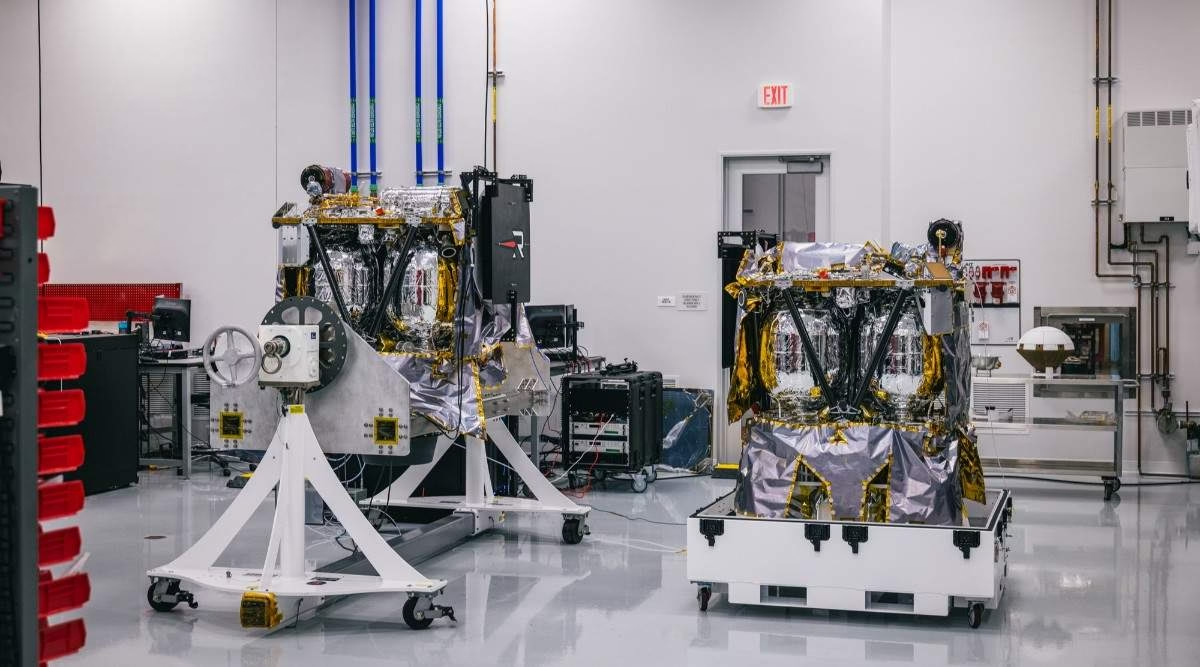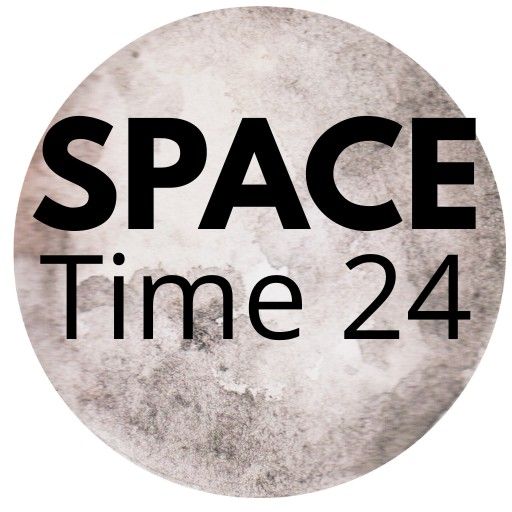NASA ESCAPADE mission, featuring Rocket Lab’s twin spacecraft Blue and Gold, will explore Mars’ magnetosphere and solar wind interactions from orbit.

NASA ESCAPADE Mission: Rocket Lab’s Twin Spacecraft to Unlock Secrets of the Martian Magnetosphere
As NASA gears up for another ambitious exploration of Mars, a new pair of spacecraft—Blue and Gold—are preparing to embark on a groundbreaking scientific mission. Built by Rocket Lab, these twin spacecraft form the backbone of NASA ESCAPADE mission (Escape and Plasma Acceleration and Dynamics Explorers), which aims to study the magnetosphere of Mars, a region critical to understanding the Red Planet’s atmospheric history and habitability.
Currently undergoing routine checkups and pre-flight testing, Blue and Gold are set to return to Florida for final launch preparations. Once launched, they will travel millions of kilometers to enter orbit around Mars, where they will operate in tandem to uncover how solar wind and magnetic fields interact with the Martian atmosphere.
This mission marks a major step in small satellite planetary science and showcases the power of collaboration between commercial space companies and NASA.
What is the NASA ESCAPADE Mission?
The NASA ESCAPADE mission is part of NASA’s Small Innovative Missions for Planetary Exploration (SIMPLEx) program. The goal is to conduct low-cost, high-value planetary science using small spacecraft platforms. ESCAPADE’s twin satellites will explore how solar wind and space weather affect the Martian atmosphere—a critical question for understanding why Mars lost most of its air and water over time.
Unlike Earth, Mars does not have a strong global magnetic field. Instead, it has localized magnetic patches in its crust. These regions offer limited protection from solar particles, exposing the atmosphere to gradual erosion by solar wind. ESCAPADE will study how this interaction takes place on a global scale.
The mission will:
- Measure the structure and variability of Mars’ magnetosphere
- Track the escape of charged particles from the upper atmosphere
- Determine how energy and plasma from the solar wind are transferred to the planet
By flying two identical spacecraft in complementary orbits, ESCAPADE will give scientists multi-point measurements of magnetic and plasma conditions around Mars—something that has never been done before.
Meet Blue and Gold: The Twin Explorers
Nicknamed Blue and Gold, the twin satellites are nearly identical in design and will be launched together as part of a dual-spacecraft configuration. Each weighs approximately 200 kilograms and is equipped with a suite of science instruments and navigation hardware.
Key features of the spacecraft:
- Built on Rocket Lab’s Photon satellite platform
- Designed for interplanetary navigation and communication
- Equipped with plasma analyzers, magnetometers, and Langmuir probes
- Capable of autonomous operations in Martian orbit
After separating from the launch vehicle and completing a cruise phase to Mars, Blue and Gold will perform independent orbital insertions and then adjust their positions to maintain a resonant science orbit. This will allow them to collect synchronized data from different parts of Mars’ magnetosphere.
The Role of Rocket Lab: NASA ESCAPADE mission
Rocket Lab is best known for its Electron launch vehicle and small satellite innovation. For ESCAPADE, the company is serving as both the spacecraft manufacturer and mission integrator, a major responsibility in a NASA planetary science mission.
Rocket Lab’s Photon platform was modified specifically for the demands of deep space travel. This includes:
- High-efficiency solar arrays
- Radiation-hardened electronics
- Deep space navigation software
- Thermal control systems for the harsh interplanetary environment
The partnership with NASA on ESCAPADE represents a shift in how space science missions are developed—demonstrating how commercial firms can deliver mission-class spacecraft at a fraction of traditional costs, without compromising scientific goals.
Science Objectives and Payload
Each ESCAPADE spacecraft carries three primary instruments:
1. EMAG (Electromagnetometer)
Measures the magnetic fields around Mars. This data helps in identifying how Mars’ crustal fields interact with incoming solar wind.
2. EESA (Electrostatic Analyzer)
Analyzes charged particles in the solar wind and magnetospheric plasma. It can detect ions escaping from Mars’ atmosphere.
3. LP (Langmuir Probe)
Monitors electron density and temperature in the ionosphere, providing insight into upper atmospheric dynamics.
Together, these instruments will provide a full picture of Mars’ plasma environment and how it reacts to solar radiation and magnetic disturbances.
Why Mars’ Magnetosphere Matters
Mars once had a thicker atmosphere, liquid water on its surface, and perhaps conditions suitable for life. Over billions of years, much of this atmosphere was stripped away, primarily due to the lack of a protective magnetic field.
Understanding this loss requires detailed measurements of how solar wind interacts with the Martian upper atmosphere and what role the patchy crustal magnetic fields play in retaining or redirecting these energetic particles.
The findings from ESCAPADE will:
- Help model atmospheric evolution on Mars
- Improve predictions of atmospheric escape rates
- Support future crewed missions by identifying radiation risks
- Provide comparative data for planetary magnetospheres across the solar system
Launch and Mission Timeline
The NASA ESCAPADE mission is scheduled to launch in 2025, taking advantage of the next optimal Earth-to-Mars transfer window. The spacecraft will be launched as a rideshare payload aboard a commercial launch vehicle and will then use their onboard propulsion systems to travel to Mars.
Mission Phases:
- Pre-launch checkout – Ongoing tests at Rocket Lab facilities
- Transport to launch site in Florida
- Launch and separation from the main payload
- Cruise phase – Interplanetary journey lasting about 11 months
- Orbital insertion – Independent maneuvers by Blue and Gold
- Science operations – One year of dual-satellite observations
Data will be relayed back to Earth through NASA’s Deep Space Network and shared with planetary scientists worldwide.
ESCAPADE and Future Mars Exploration
ESCAPADE serves as a precursor mission for larger efforts focused on human exploration of Mars. The data it collects will help engineers design better shielding for spacecraft and habitats, select safer landing sites, and understand the long-term effects of solar radiation on crew and electronics.
Additionally, the mission demonstrates how low-cost, high-capability missions can support major science goals. With rising interest in exploring and possibly colonizing Mars, ESCAPADE fills a vital gap in knowledge.
Educational and Scientific Impact
The twin spacecraft will not only advance Mars research but also inspire the next generation of engineers and planetary scientists. Through educational outreach and open data initiatives, the mission is set to become a valuable resource for:
- University research programs
- STEM education curricula
- Public engagement in planetary science
The mission also illustrates how small spacecraft can be deployed in interplanetary missions, opening doors for CubeSats, microprobes, and commercial science satellites in deep space.
Conclusion: Small Satellites, Big Discoveries
NASA ESCAPADE mission, powered by Rocket Lab’s innovative engineering and a strong science team, represents a new model for planetary exploration. With Blue and Gold en route to Mars, scientists are on the cusp of unlocking crucial secrets about the Martian magnetosphere and the forces that shaped the planet’s history.
This mission is more than just another step in Mars exploration—it’s a testament to how collaboration, technology, and scientific curiosity can work together to redefine what’s possible in space.
As Blue and Gold move closer to launch, the world watches with anticipation, eager to learn what these twin explorers will uncover in the orbit of the Red Planet.
https://x.com/RocketLab/status/1945930661480783969?t=HJ0zGjv5C65BMAM5SIFfcQ&s=19
FAQs: NASA’s ESCAPADE Mission
Q1. What is the ESCAPADE Mars mission?
A: ESCAPADE (Escape and Plasma Acceleration and Dynamics Explorers) is a NASA mission designed to study the Martian magnetosphere using two small satellites, named Blue and Gold, developed by Rocket Lab.
Q2. What is the goal of the NASA ESCAPADE mission?
A: The mission aims to better understand how solar wind and space weather affect Mars’ weak magnetosphere and how atmospheric particles escape into space, contributing to the planet’s climate evolution.
Q3. Who built the ESCAPADE spacecraft?
A: The twin spacecraft, Blue and Gold, were developed by Rocket Lab using their Photon satellite platform, in partnership with NASA and the University of California, Berkeley’s Space Sciences Laboratory.
Q4. Why is Mars’ magnetosphere important to study?
A: Unlike Earth, Mars lacks a global magnetic field. Studying its weak and patchy magnetosphere can reveal why Mars lost much of its atmosphere and became a cold, dry planet over time.
Q5. How will the NASA ESCAPADE mission be launched?
A: The spacecraft are scheduled to be launched aboard a commercial rocket, likely from Florida, and will journey together before entering complementary elliptical orbits around Mars.
Q6. What instruments will Blue and Gold carry?
A: Both spacecraft will be equipped with magnetometers, electrostatic analyzers, and Langmuir probes to measure magnetic fields, ion flows, and space plasma density around Mars.
Q7. What makes ESCAPADE different from past Mars missions?
A: ESCAPADE is the first mission to use two spacecraft in coordinated orbits to study Mars’ magnetosphere simultaneously, providing detailed 3D observations and real-time plasma interactions.
Q8. When will ESCAPADE arrive at Mars?
A: The mission is expected to launch in 2025 and arrive at Mars approximately 11 months later, depending on the final launch window and interplanetary trajectory.
Q9. What is the significance of using twin spacecraft?
A: Using two identical spacecraft allows for simultaneous measurements from different locations, helping scientists map how solar wind energy flows through Mars’ magnetosphere with much higher accuracy.
Q10. How will ESCAPADE contribute to future Mars exploration?
A: ESCAPADE will enhance our understanding of space weather impacts on Mars, helping to protect future human explorers and inform the design of missions that rely on reliable communications and satellite systems around the Red Planet.
Falcon 9 to Launch USSF‑178 Mission: Cutting-Edge Weather Satellite and BLAZE‑2 Prototype Fleet, Will Enhance USA’s Military Capabilities?
